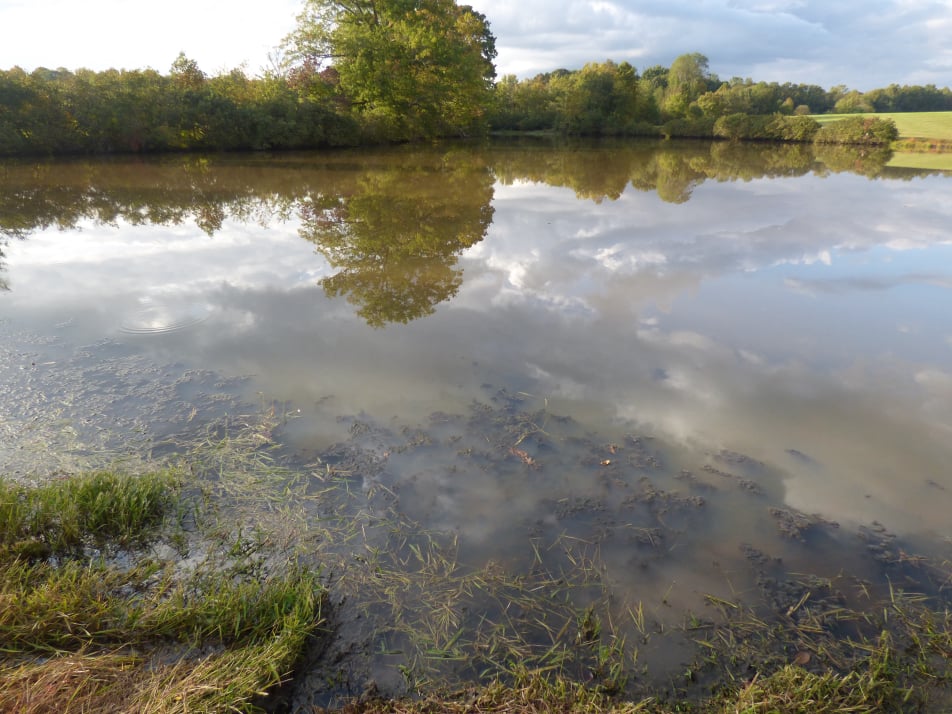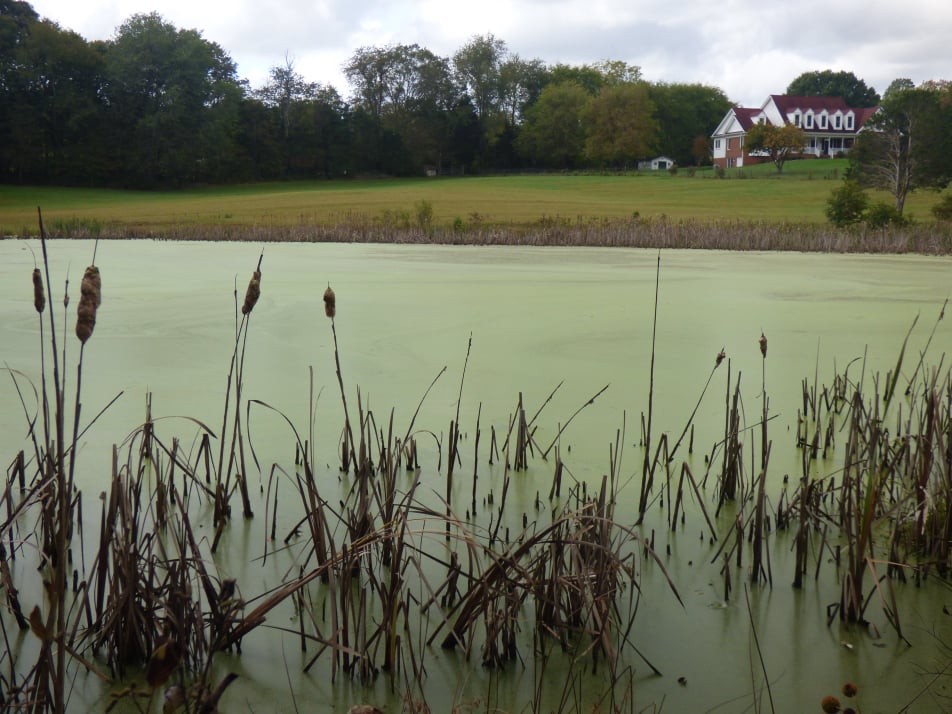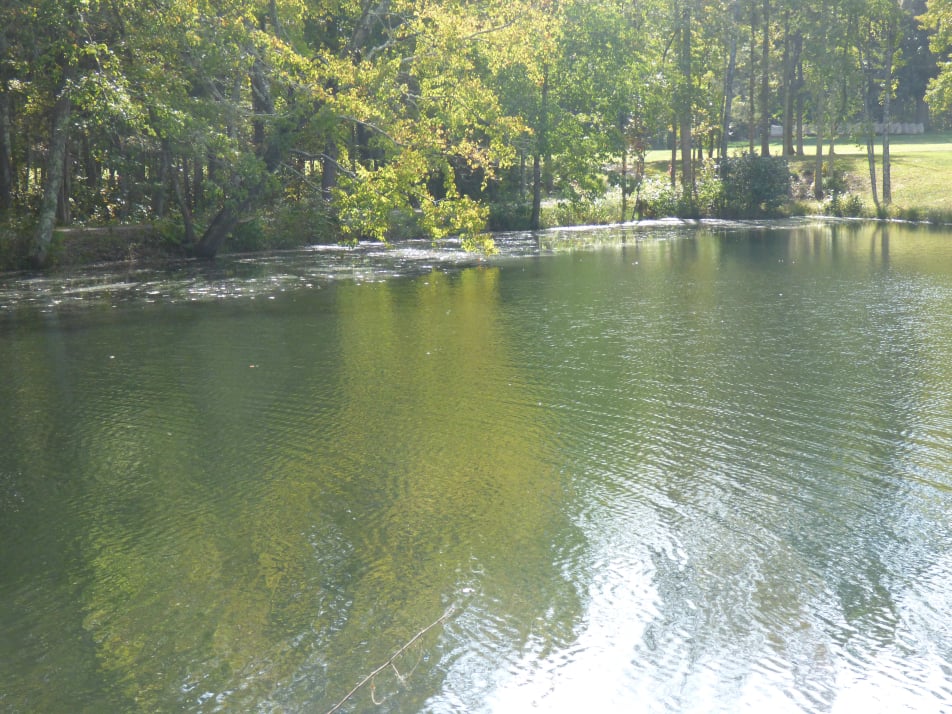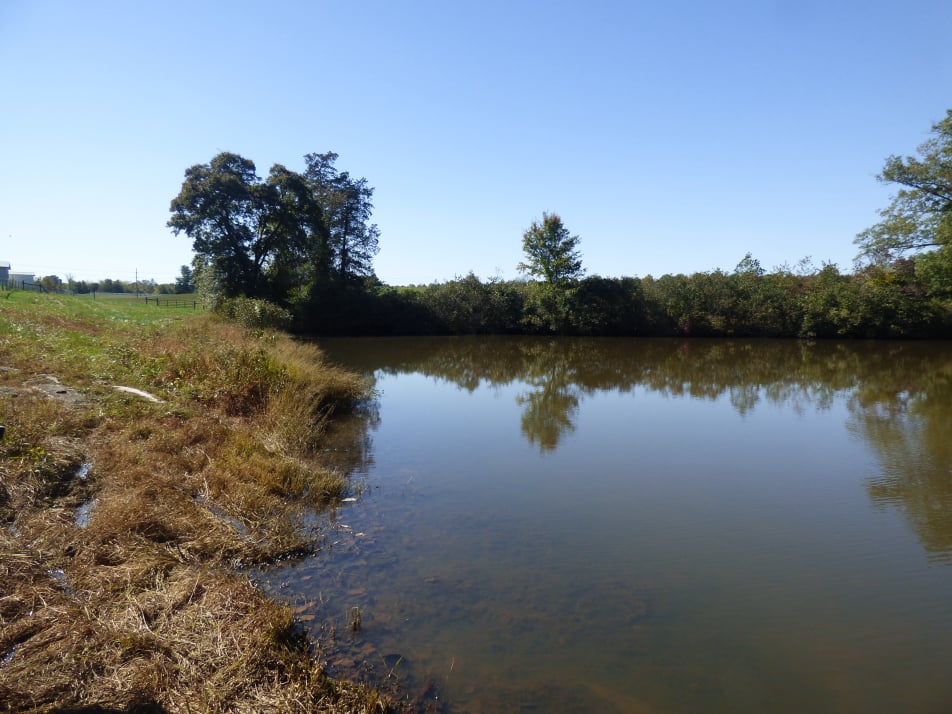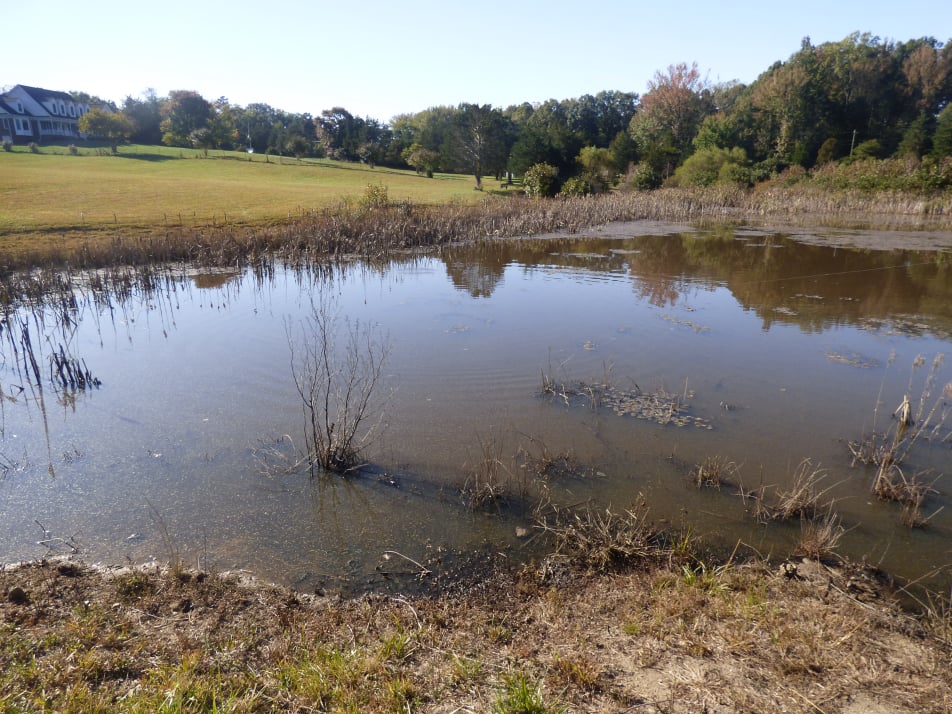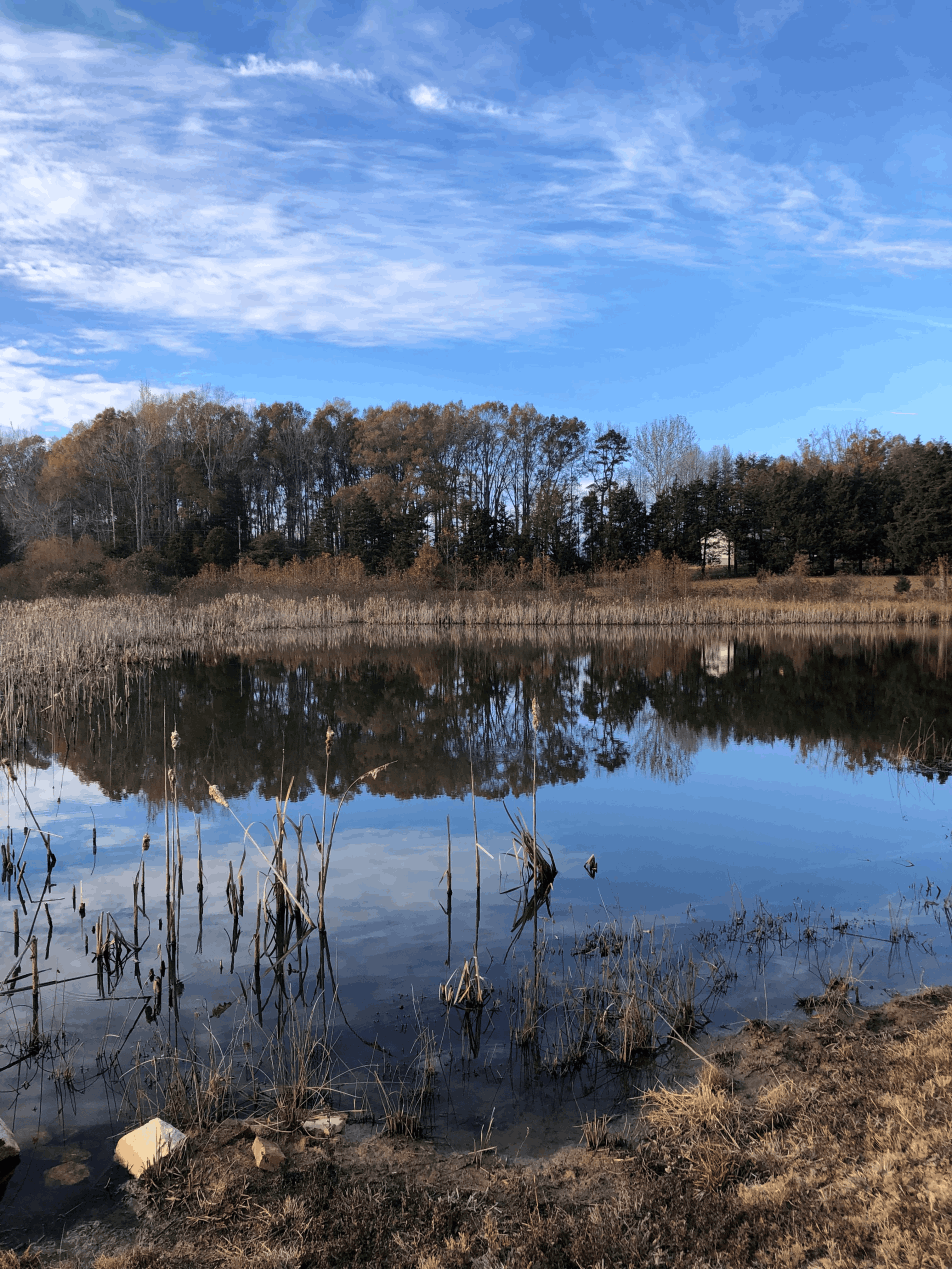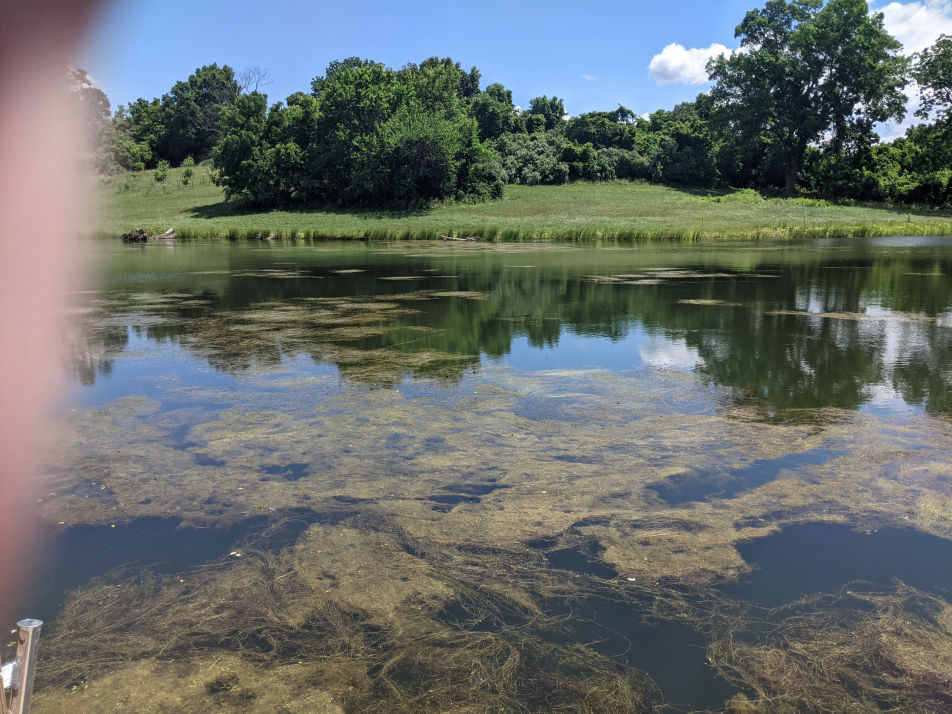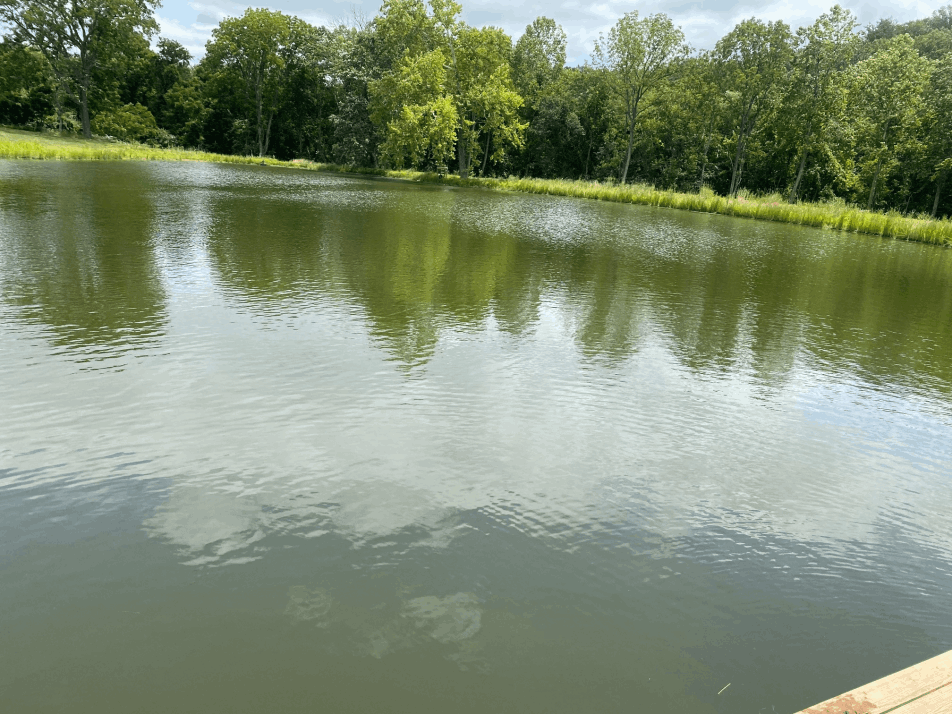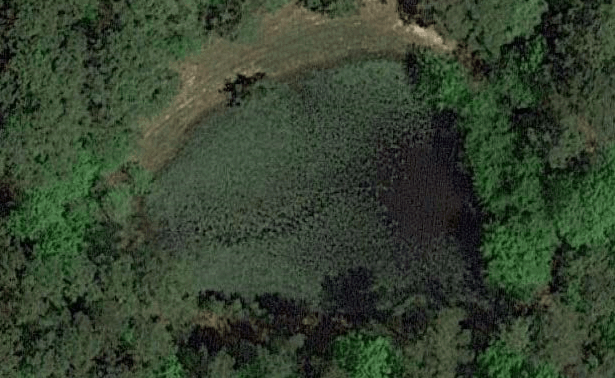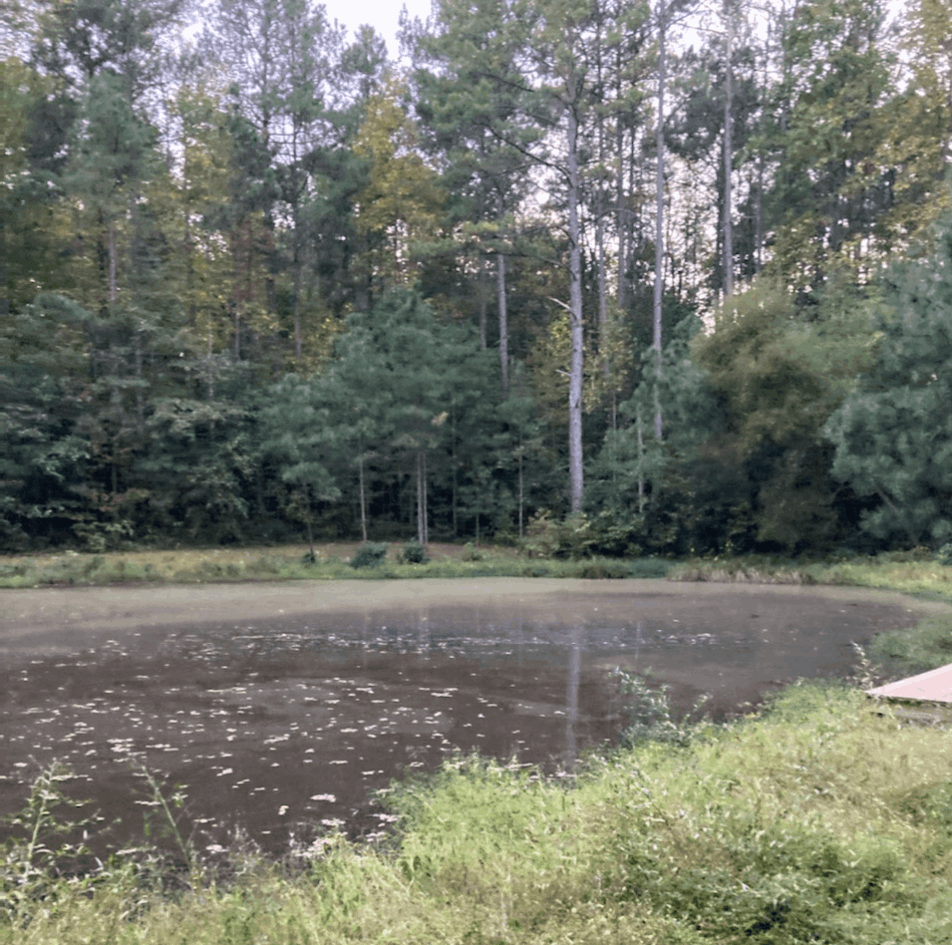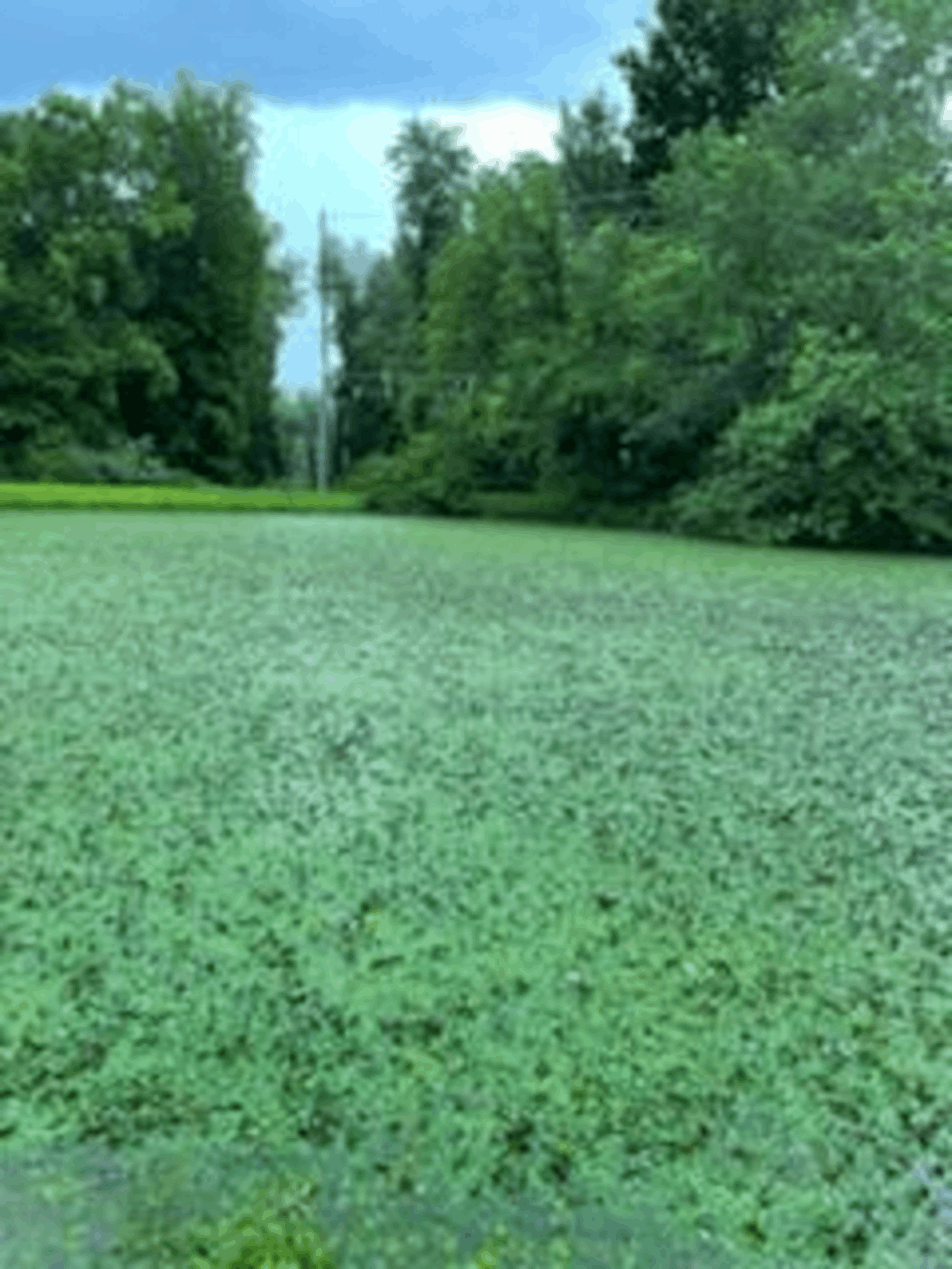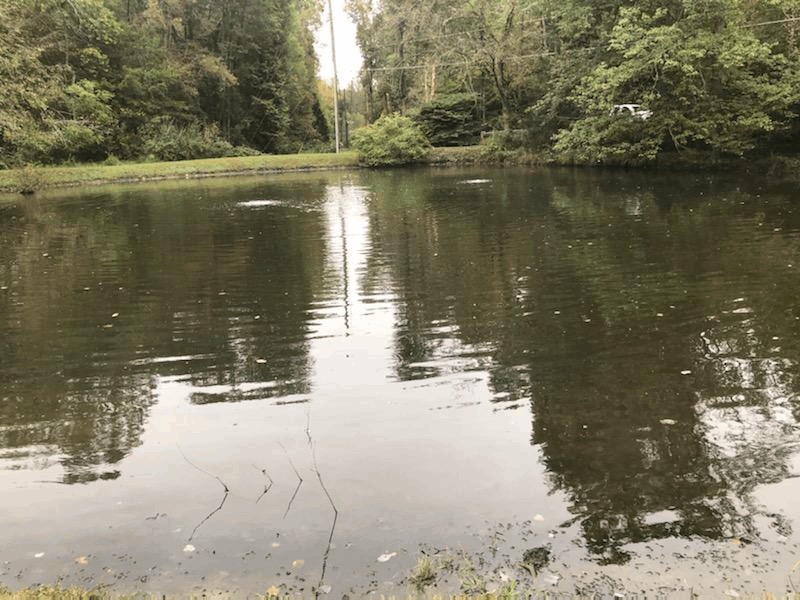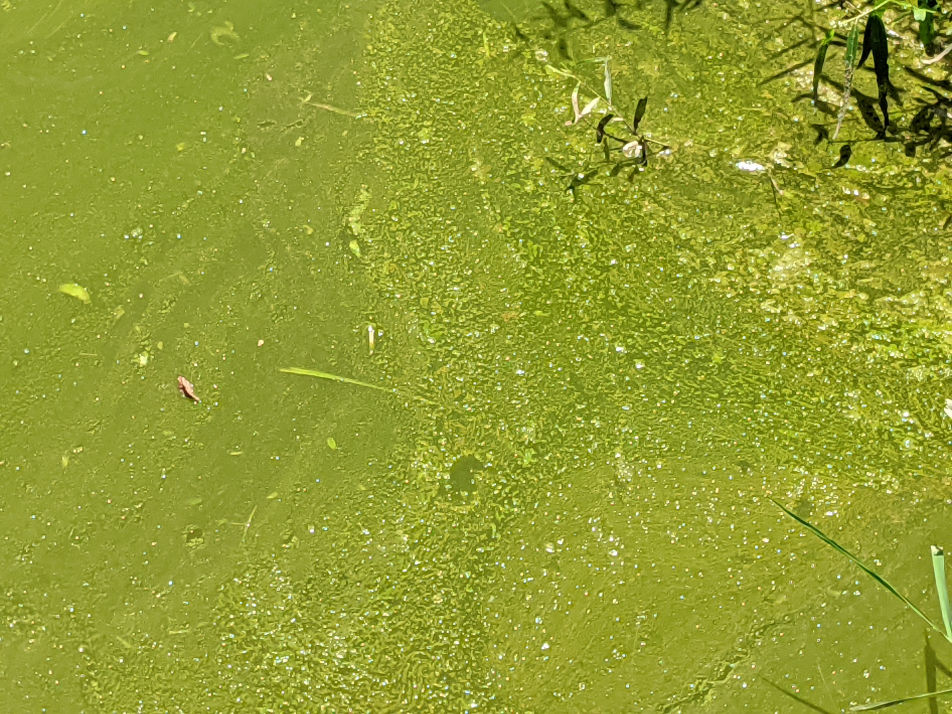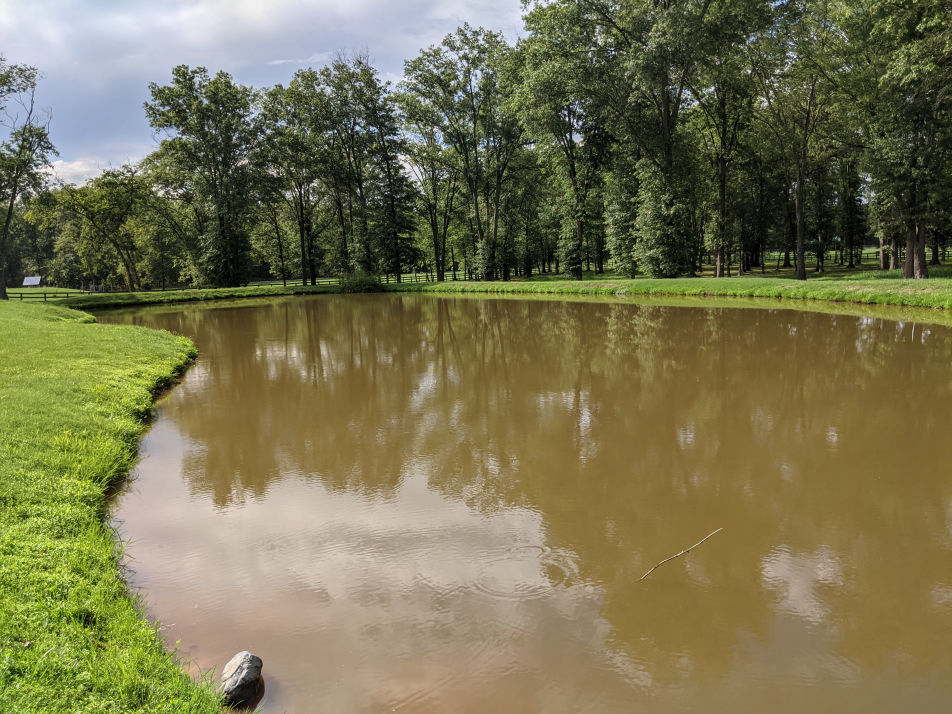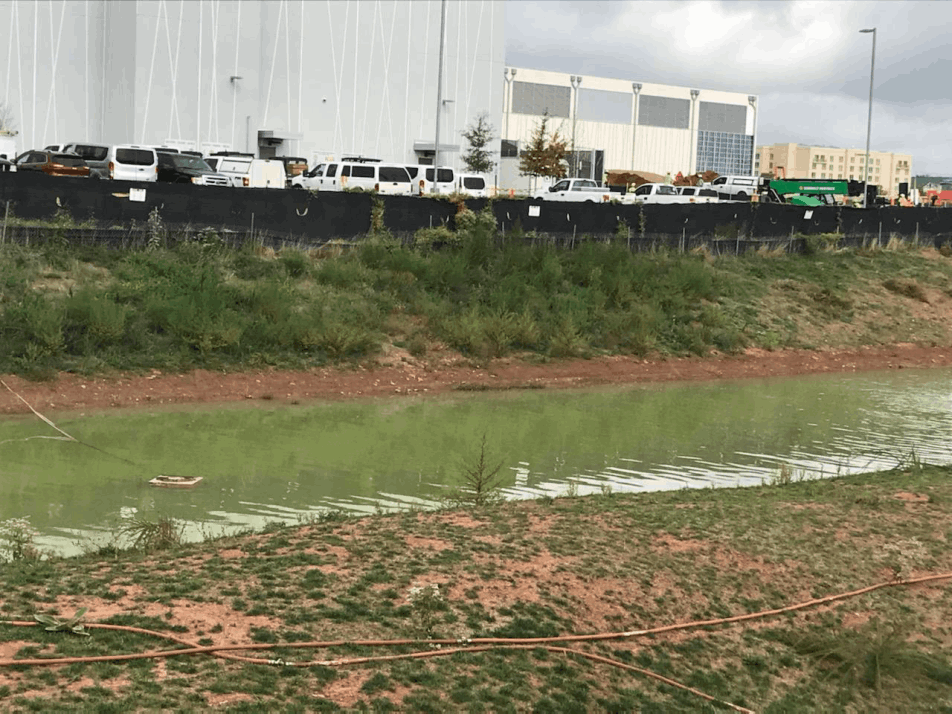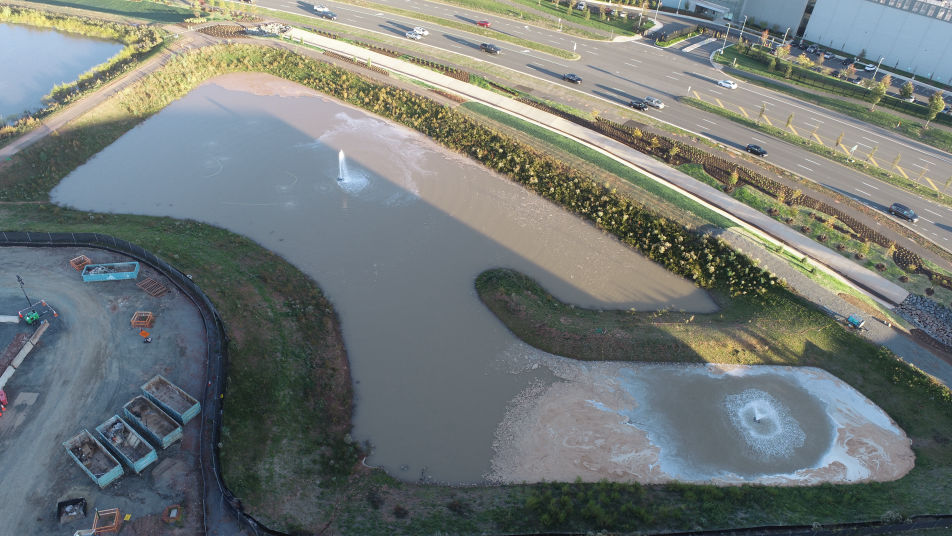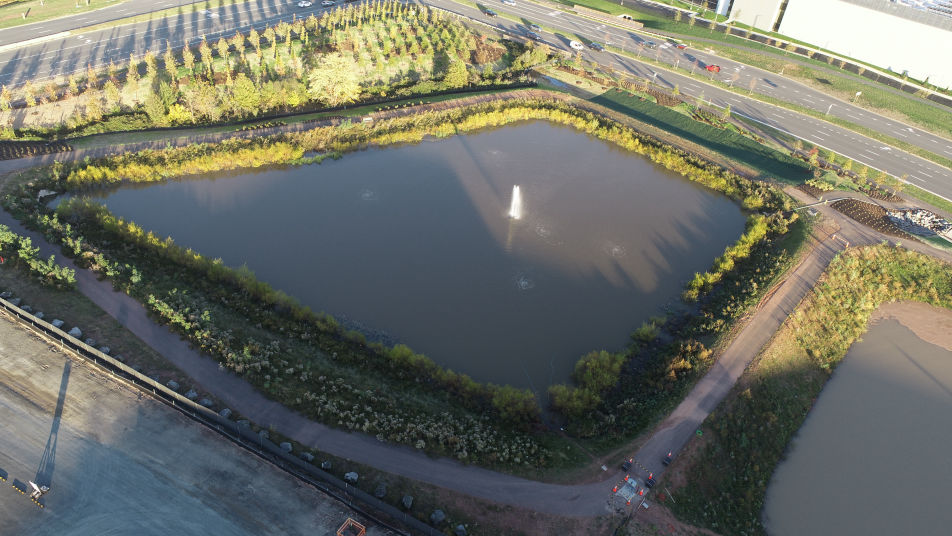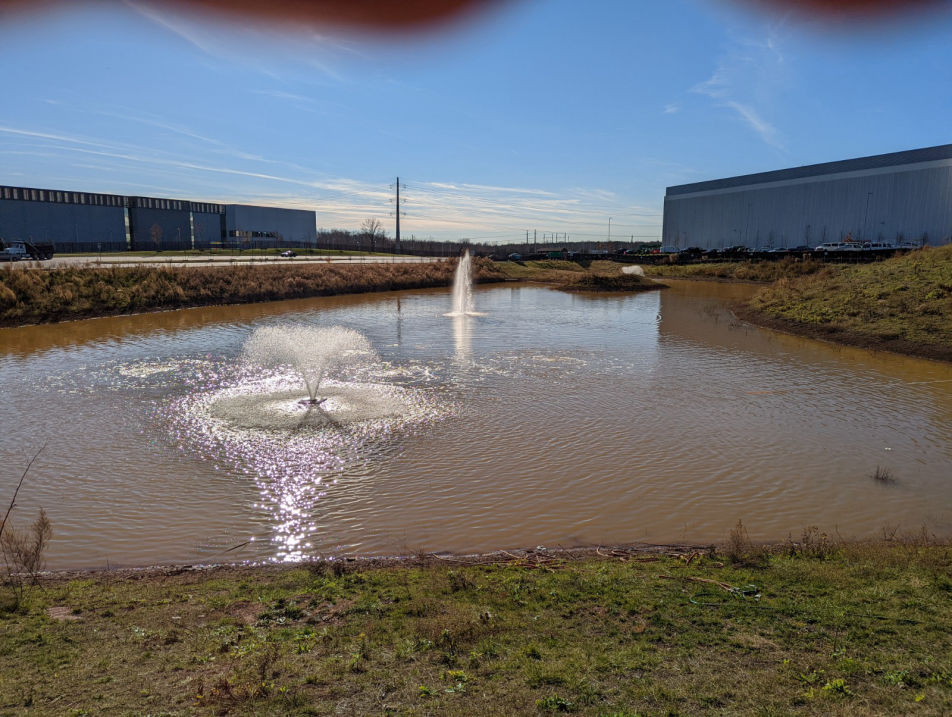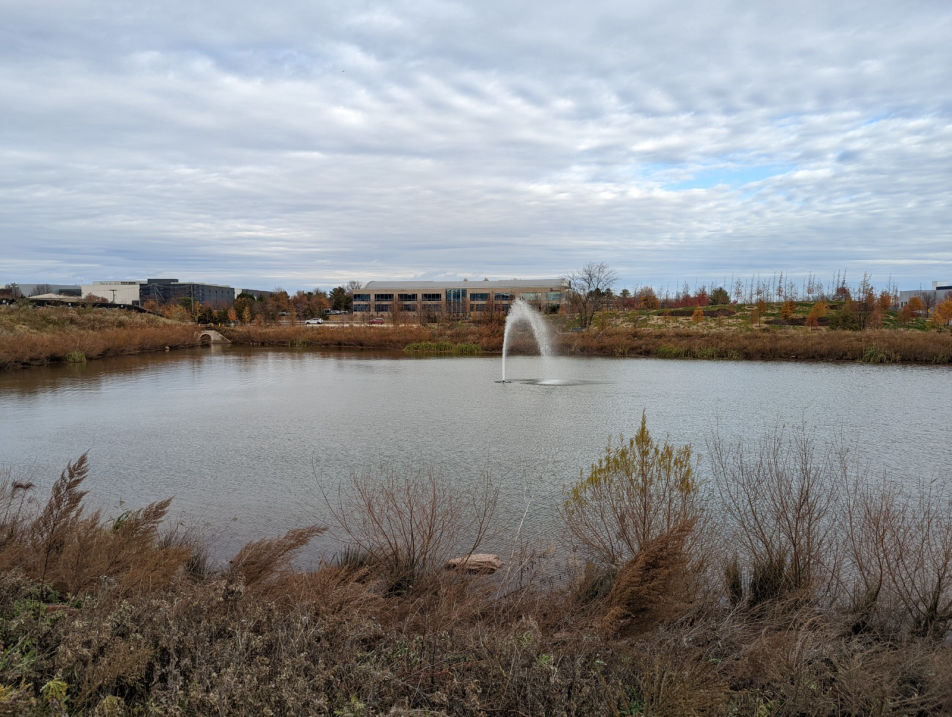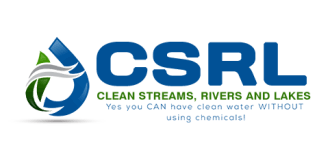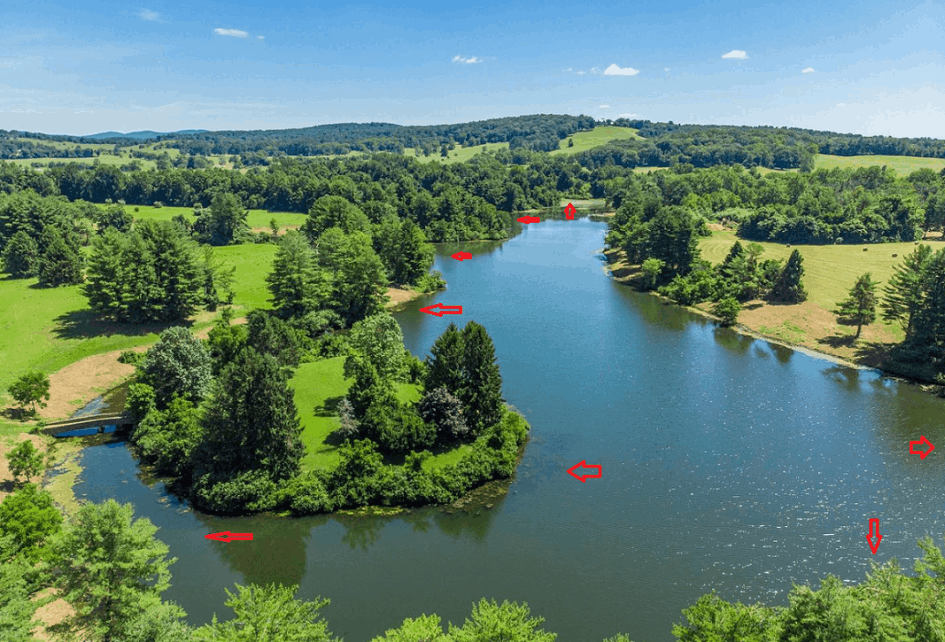
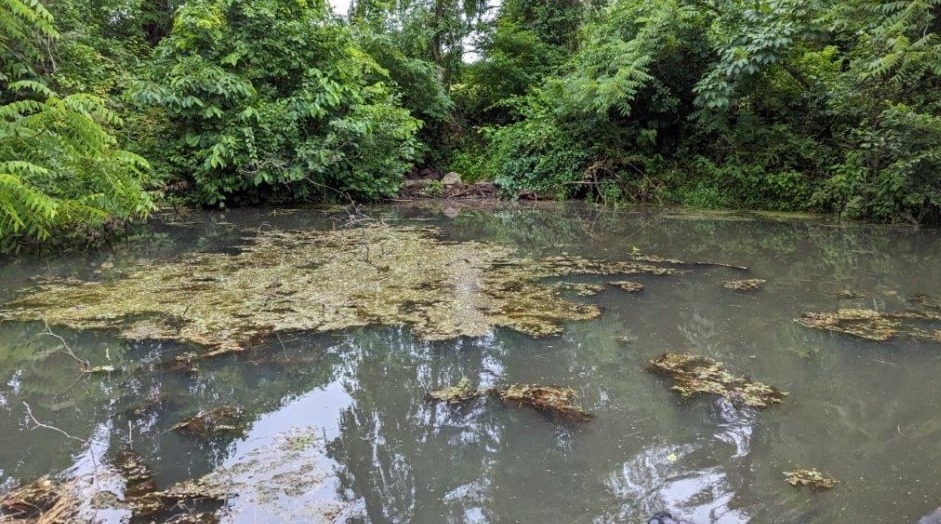
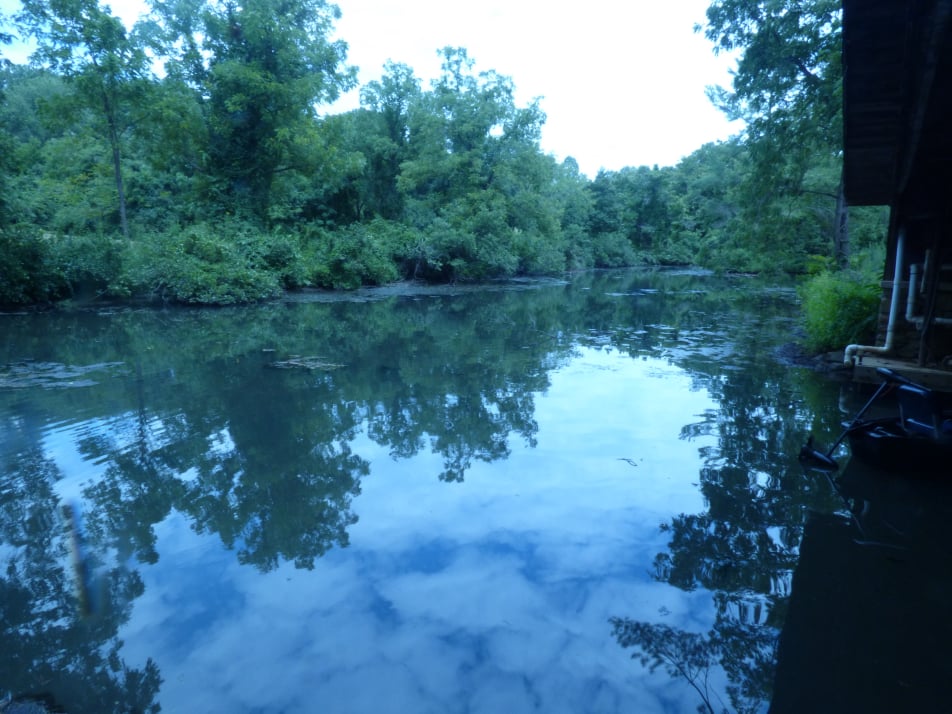
23 Acre Lake Airlie Warrenton, VA
We spoke at length with new owner of 250+ acres in Warrenton, VA about restoring his lake while keeping his fishing top notch. Before he purchased the lake it had been neglected and had waterchestnut, lots of hydrilla, duckweed, and a variety of algae including benthic and floating algae. Pictured left was years before it was purchased. The hydrilla is underwater and the duckweed is missing from photo. The biggest challenge is lowering the nutrient levels in the lake. Muck was over 3 ft. deep in most places.
Our Treatment Plan was developed, then executed
In Virginia, hydrilla is almost impossible to get rid of; waterchestnut is one of the worst invasive floating weeds. We had no choice but to use a "selective herbicide" that would kill the hydrilla, waterchestnut, duckweed and most algae. The herbicide was designed to break down and go away naturally in 30 days. We worked for a month, then cleaned the water with several weeks of diatom promoter before returning to more herbicide and algaecide including some granular to go after the benthic algae with no water restrictions. Fishing was monitored and was maintained excellent through out our processes. Once as much weed and algae was conservatively killed back, we installed Beneficial Bacteria Reactor / Generator systems throughout the 23 acre lake with three aeration systems to give us powered clarifier systems. We placed two unpowered bio-reactors in far end of lake where water comes in via streams. Bio-Pods were placed all around the lake. Pictured to left is looking out the boat house which is the top of the finger in the worst condition, including the worst algae infestation.
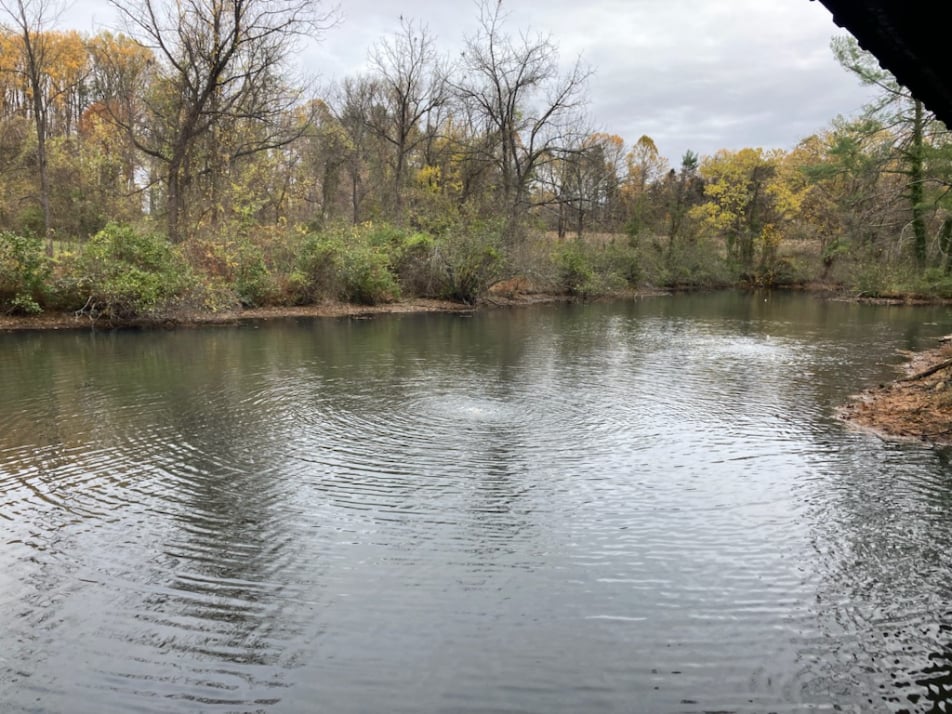
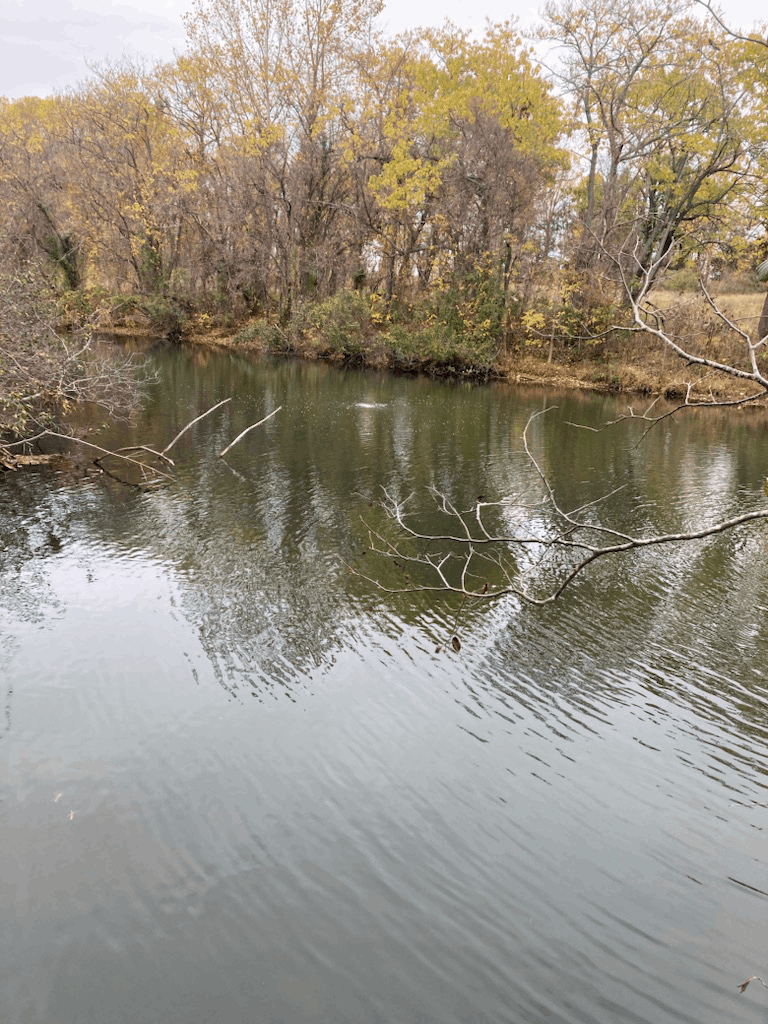
Installing Beneficial Bacteria Reactors Systems finished off the rest of the algae and weed by reducing N & P nutrient loads; clarifying lake quickly. Left is looking out the boat house, up the same part of with lake two aeration heads 30 days later. ENTIRE 23 acre lake looks like the picture to the left. Excess nutrients under control.
Follow up Plan was developed
Continued maintenance treatments for the water health, aquatic health and oxygen by using diatom promoter, calcium silicate, aeration and maintaining beneficial bacteria bio-reactors. Lake should have nutrient levels under control, be deeper, weed free and clean this spring.
